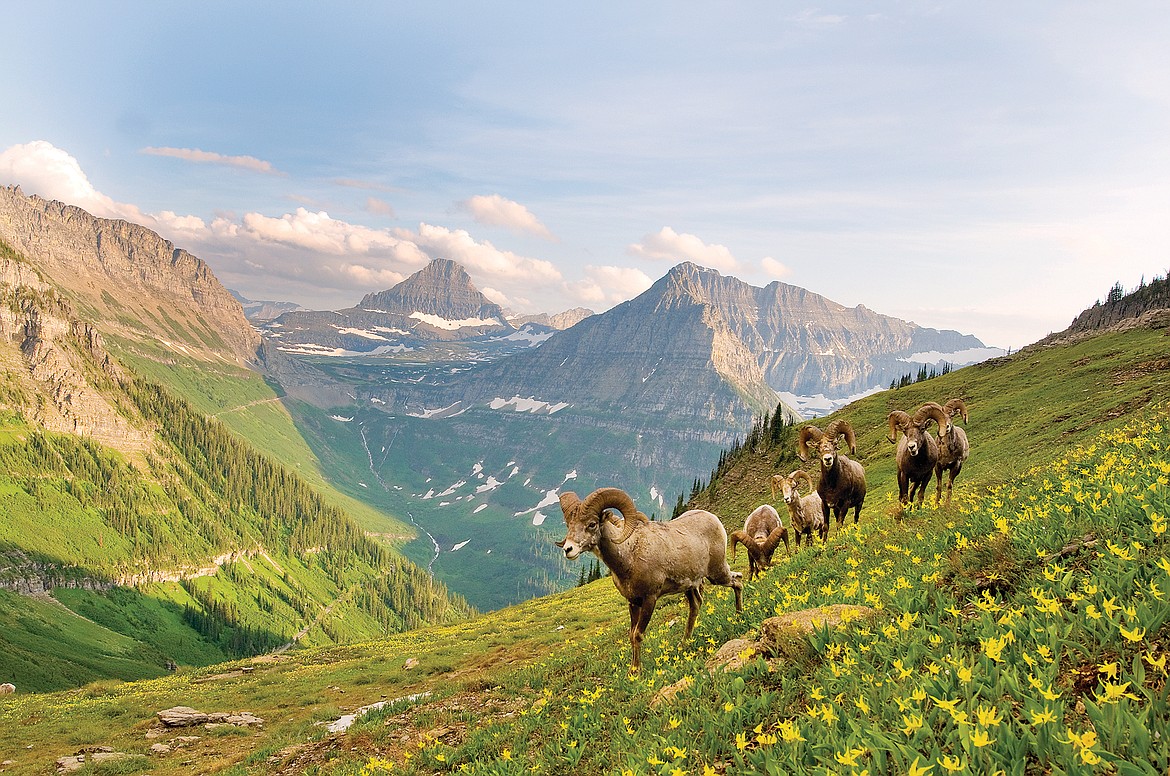Permits to park, one-way hiking on Highline Trail, just some of changes that could be coming to Glacier National Park
Glacier National Park released a finding of no significant impact for its Going-to-the-Sun Road corridor management plan Wednesday. The plan would add more parking spaces inside the park, potentially make a portion of the popular Highline Trail a one-way hike, and ban most overnight parking in the corridor, save for lots near the lodges.
The plan was first talked about several years ago, but formalized under the Trump Administration in 2019. Superintendent Jeff Mow said recently Glacier wanted to include a ticketed entry system for the Going-to-the-Sun Road in the plan, but the previous administration wouldn’t allow it.
This plan does open the door to that.
“If implementation of this plan is not successful in managing desired conditions in the Sun Road corridor, the NPS may consider a reservation system for the entire corridor. The National Park Service will complete additional planning, analyses and compliance, as appropriate, before implementing such a system,” the plan notes. Glacier is currently working on the possibility of a reservation system for this summer. (See related story).
Still, the plan looks to mitigate crowds along the corridor, through several actions depending on crowd thresholds. Some of the highlights include:
• Converting the former baseball fields off the Quarter Circle Bridge Road to a 100-space parking lot. The fields are long gone anyway, as the park has used it at a staging area for construction equipment since the Sun Road reconstruction began in earnest in 2007.
• Add 10 more spaces to the St. Mary visitor center parking lot and 40 more spaces at the 1913 Ranger Station on the east side. There would also be a bike path to the visitor center and an underpass built for bikes and pedestrians to the visitor center. The path would be about 1.5 miles long. The lots would be constructed if funding becomes available
• During peak season there would be no overnight parking along the road, except for the visitor centers at St. Mary and West Glacier. There would be overnight parking at Lake McDonald Lodge and Rising Sun and at campgrounds. The overnight parking restrictions along the road would include those people with backcountry permits. Folks would have to use the shuttle to access trailheads.
• If certain visitation thresholds are met, the Highline Trail from Logan Pass to Big Bend would be one way, with a timed entry permit system to hike the trail. Glacier would construct a trail from Big Bend up to the Highline Trail. The Big Bend Trail would only be open from mid to late July and then close at Labor Day, to protect wildlife. If an emergency arose, such as a bear conflict, people could turn around.
• Possibly implement a day hike permit system at the Gunsight Pass Trail. The Park would also promote the use of the trail from Jackson Glacier Overlook to Sun Point.
• Logan Pass, Avalanche Creek, Big Bend and the St. Mary Visitor Center could see a parking permit system depending on visitor use and whether they exceed thresholds.
• There would be more toilets in the park under the plan, with pit toilets at the new west side parking, another one at Avalanche, one at Siyeh Bend as well as two off trails — one at Hidden Lake Overlook and another one at Preston Park.
• The plan looks to extend hours at the St. Mary and Apgar Visitor Centers and improve traffic circulation at the Avalanche Creek campground by extending an exit just to the west of the entrance.
Park spokeswoman Gina Kerzman said none of the plan would be implemented this summer season.
The document also notes that increased traffic will have an impact on wildlife.
“Impacts under the preferred/proposed alternative would include increasing incidence of roadkill, disturbance, displacement and habituation of black bears, coyotes, wolves and mountain lions, bighorn sheep, mountain goats, other ungulate species and small mammals. Implementation of shuttle improvements, including changes to schedules, additional stops, and increased rider parking, combined with implementation of a phased day use parking permit system would aim to disperse visitor use and activities along the corridor. Foraging, wildlife travel corridors, denning, and cover habitat would be affected,” it states.
In addition, there is concern about birds.
“Traffic noise is a very real concern for breeding birds along (the road). Breeding bird surveys have been conducted annually on the Sun Road since 2009, beginning at Wild Goose Island heading west. Between Wild Goose Island and the Loop, researchers stop approximately 50 times for three minutes each time recording bird presence. Once the survey teams reach the Loop, the traffic noise is so loud, that the number of detections significantly drops,” biologists found. “Park biologists also report it is not unusual to find bodies of dusky grouse killed by vehicles on the upper stretches of the Sun Road and ruffed Grouse on the lower sections. Bodies of smaller birds such as chickadees are also found on the road showing evidence they were hit by vehicles.”
The entire document can be viewed at: https://parkplanning.nps.gov/projectHome.cfm?projectID=47660.
This story has been updated to reflect more details of the plan and the possiblility of a reservation system in the future.

